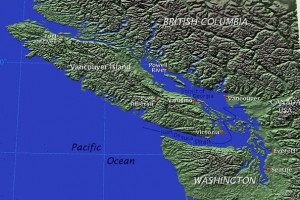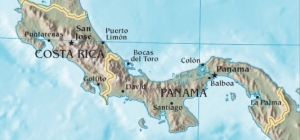The Geography and Climate of Widow Walk and Isthmus
I anticipate that Isthmus, the first sequel to Widow Walk, will be ready for readers by this Christmas. The geography and climate of the two regions in which Emmy Evers and her family traveled were distinctly different.
- Widow Walk
- is set in the Pacific Northwest region, including parts of present day Washington state, the San Juan Islands, and British Columbia, Canada. The towns and areas of Widow Walk include Olympia, Seattle, Whidbey Island, Port Townsend, Port Gamble, Bellingham, Vancouver, Esquimalt, Victoria, the Queen Charlotte Islands (now named Haida Gwai), and Fort Simson. Prominent waterways included the Strait of Juan de Fuca, Puget Sound, the Campbell and the Stikene Rivers

- is set in the Pacific Northwest region, including parts of present day Washington state, the San Juan Islands, and British Columbia, Canada. The towns and areas of Widow Walk include Olympia, Seattle, Whidbey Island, Port Townsend, Port Gamble, Bellingham, Vancouver, Esquimalt, Victoria, the Queen Charlotte Islands (now named Haida Gwai), and Fort Simson. Prominent waterways included the Strait of Juan de Fuca, Puget Sound, the Campbell and the Stikene Rivers
- During the time Widow Walk takes place, in 1859, the area was called the Washington Territory of the Oregon Country
- Settlers from various countries were drawn to Oregon Country due to the geography and moderate climate of the area
- Farmers came for the rich, fertile soil, plentiful rainfall, and comparatively mild year round temperatures. The Pacific Ocean lies to the west and numerous rivers and lake are found in the territory, which allows people to rely on fishing for food and commerce. Annual rainfall is over 40 inches.
- Dense forests along the coastal mountain range were abundantly inhabited by beavers and other fur bearing animals, which provided a strong lure to trappers, However, by the time Emmy and Isaac Evers pioneered in that area (from 1851 to 1859), most of the lucrative fur trade had died out and pelts no longer brought the prices they once had. Several areas along the coast and inland were “trapped out.” Some animals, like the sea otter, had been hunted to extinction.
- The productive nature of the land made the area inhabitable to all, which ultimately led to ongoing violence and strife between the indigenous and newly settled peoples, both sides of which wanted nothing more than to live their lives enjoying the bounty this beautiful setting could bring
- Isthmus
- is set in Panama one year later in 1860, then a part of Colombia which was known as “Nueva Grenada..” The towns in Isthmus include Cali, Cartegena, Turbo, San Blas, San Isbel, Nombre de Dios, Puertebelo, Aspinwal-Colon, Panama City, and Las Cruces. Prominent waterways included the Rio Chagres, Rio Gatuncillo, and the Rio Cuango

- Panama, situated on the isthmus connecting North and South America, is bordered by Costa Rica to the west, Colombia to the southeast, the Caribbean to the north and the Pacific Ocean to the south. Panama’s area is 75,515 sq. km, and the 47 mile journey across the isthmus from Panama City to Aspinwall-Colon by train took about 4 to 6 hours.
- The Spanish claimed the isthmus at the time of Columbus and held the territory until 1821. Prior to the Spanish, the area was inhabited by several indigenous tribes, including the “Cueva” (Cave), Chibchan, and Chocoan, peoples. The Spanish settlers exterminated the original inhabitants, which allowed other aboriginal tribes like the “Kuna” and “Wounaa” to migrate into the territory from Colombia.
- Panama’s jungle is home to an abundance of tropical plants, animals and birds – some of them to be found nowhere else in the world. The Darien Forest, setting of much of the story in Isthmus, is one of the world’s most difficult terrains. Annual rainfall of this tropical region is over 250 inches per year.
- The word Panama means “abundance of fish, trees and butterflies.” The Spanish conquistadors also called the isthmus “the valley of gold” because of the abundance of gold treasure found in the area.
- Panama’s isthmus represented the quickest route to the gold fields of California. During the ten years after gold was discovered at Sutter’s mill, more than 500,000 people ventured westward through it.
I encourage you to read Widow Walk, available on Amazon and Barnes & Noble in hard cover, Kindle, Nook and Audibles as a prequel to Isthmus